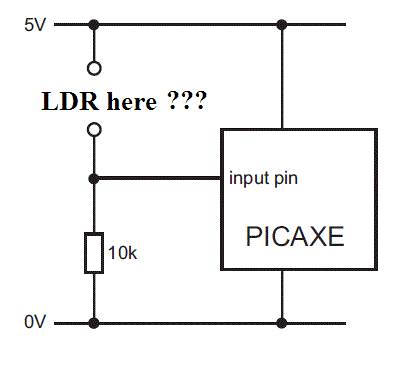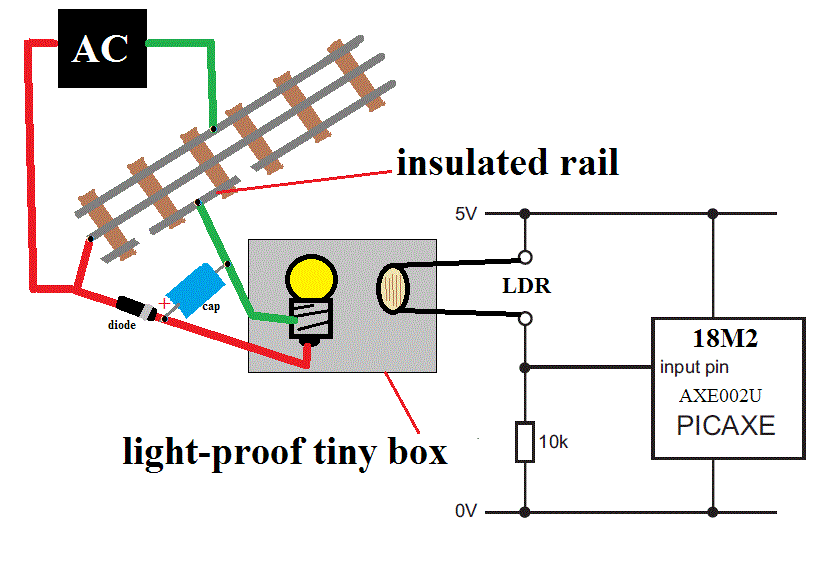joe paul
Senior Member
Hi Folks,
I want to use a Light Dependant Resistor to hold an input pin low when dark. With the 18M2 project board @ 4.5 volts, if the resistance of the LDR is 2 mega ohms (dark), is that sufficient to hold an input pin low by itself? (I don't want to slow down the program with a READADC and an IF/THEN.)
Thanks!
Take care, Joe.
I want to use a Light Dependant Resistor to hold an input pin low when dark. With the 18M2 project board @ 4.5 volts, if the resistance of the LDR is 2 mega ohms (dark), is that sufficient to hold an input pin low by itself? (I don't want to slow down the program with a READADC and an IF/THEN.)
Thanks!
Take care, Joe.



